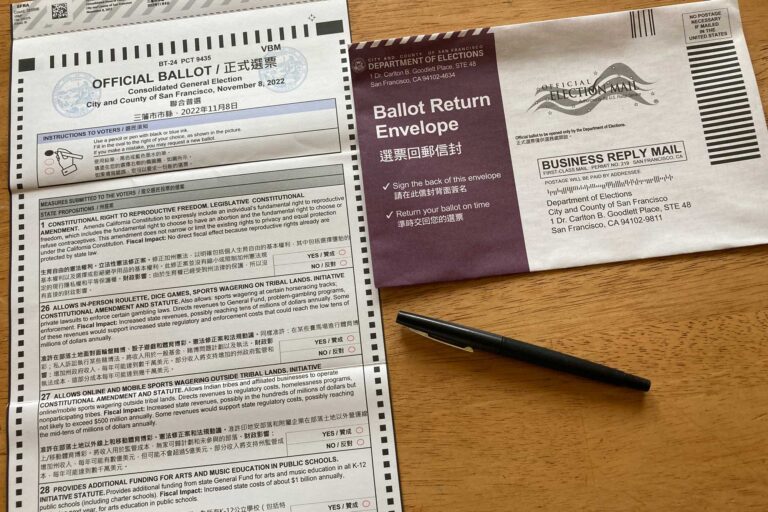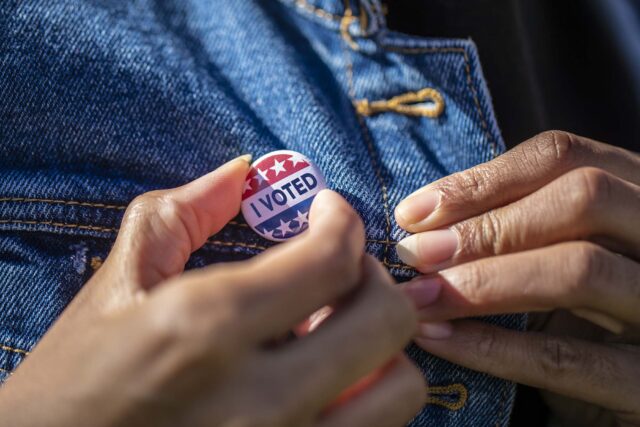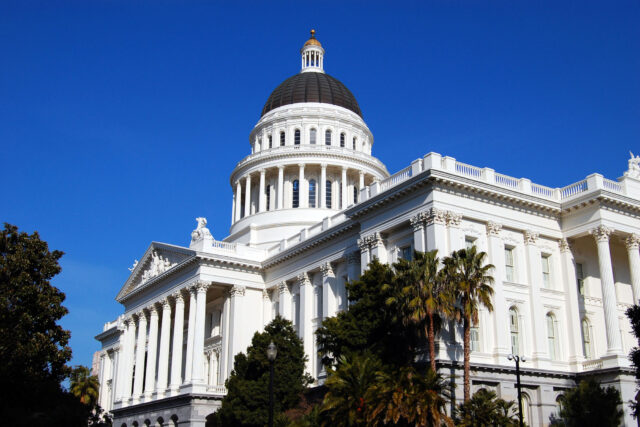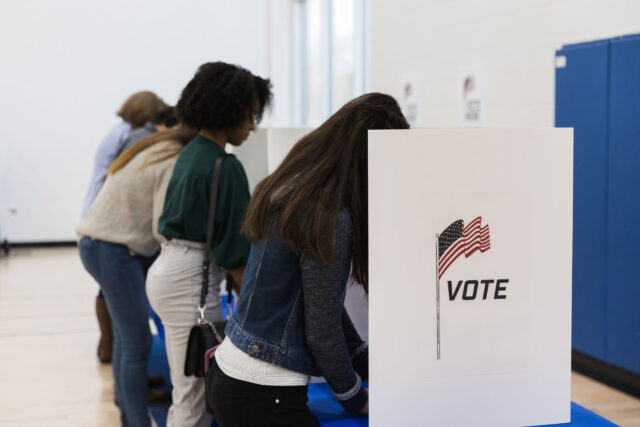California voters are in the final stages of making their midterm ballot choices. But statewide partisan races are getting scant attention given the state’s long record of one-party dominance. Will state propositions offer voters a compelling reason to vote this year? The outlook is cloudy at best. Overall attitudes toward the state propositions and potential initiative reforms suggest that our 111-year-old direct democracy system is still a work in progress.
Proposition 1—a legislative constitutional amendment on abortion rights—is the top choice when voters are asked to name the state proposition they are most interested in, according to the October PPIC Statewide Survey. Far fewer name one of the five citizens’ initiatives (Propositions 26–30) or the referendum (Proposition 31) on the November ballot. Strikingly, nearly half do not name a single state proposition that interests them this year. However, the response to Proposition 1 has implications for voter turnout in the midterms and points to a future path to engage more voters in policymaking and elections.
Likely voters across partisan groups and age, education, gender, income, and racial/ethnic groups are most interested in Proposition 1. Importantly, Proposition 1 is more often the number one choice among Democrats (28%) than Republicans (12%). In the September PPIC survey, 61 percent of likely voters said the outcome of the vote on Proposition 1 was very important to them (73% Democrats, 48% Republicans). In our October survey, 61% of likely voters say the issue of abortion rights is very important in their vote for Congress this year—including 78% of Democrats compared to 43% of Republicans. If these views translate to a propensity to vote, Proposition 1 could be the political wildcard in the competitive House races that will help decide the party in control of Congress.
What is going on with the low interest in the five citizens’ initiatives on the November ballot? California has a long history of high-profile policy topics and controversial initiatives on the ballot. But this year, none seems to live up to voters’ expectations. The October survey tests voters’ support for three citizens’ initiatives, each with major public campaigns—Proposition 26 (sports betting in casinos), Proposition 27 (online sports betting), and Proposition 30 (reducing greenhouse gases). Not only do few Californians mention the three propositions as most important to them, less than half say that the outcome of Proposition 26 (21%), Proposition 27 (31%), and Proposition 30 (42%) is very important to them.
Most of the campaign spending has been on the two gambling initiatives this fall, but our survey shows that few say they are personally interested in sports betting. Meanwhile, support for Proposition 30 is declining as voters hear conflicting messages about its value in addressing their deep worries about reducing the existential threats of climate change and wildfires. With time running out, Propositions 26 (34% yes), Proposition 27 (26% yes), and Proposition 30 (41%) are each falling short of a majority vote.
How are likely voters feeling about the total package of the seven state propositions on the November ballot? They are divided when asked if the state propositions “reflect the concerns of average California residents” (50% agree, 46% disagree). Democrats (63%) more often than Republicans (36%), and independents (42%) hold this positive view. Likely voters are also divided over whether there are “too many propositions on the state ballot” (47% agree, 49% disagree). Republicans (58%) more often than Democrats (40%) and independents (43%) hold a negative view of the number of state propositions. In October 2020, likely voters were somewhat more likely to say there were too many propositions (55% agree, 43% disagree)—there were 12 on the November ballot that year.
Despite the perceived shortcomings of the state propositions this November, there is limited appetite for changing the system now in place to qualify initiatives for the state ballot. A majority vote is needed to make changes in these laws since they are part of the California Constitution. While many feel that the state propositions do not reflect the concerns of average California residents, only 31% of likely voters favor a new law that would allow electronic signature gathering to qualify an initiative. And while many believe there are too many state propositions on the ballot, just 43% favor a new law that would increase the number of signatures needed to qualify an initiative. Democrats favor the latter proposal while support in every other voter group falls short of a majority.
What can we learn from voters’ views on the state propositions this fall? Proposition 1 is a legislative initiative that connects with voters because of its timeliness and policy relevance. It may be a game changer for voter turnout in the midterms. Meanwhile, the five citizens’ initiatives and referenda have not generated much interest. They each seem unlikely to translate into high enthusiasm for their causes or for voter turnout. Still, reforming the citizens’ initiative process is not an easy task.
While we search for political consensus around reform, an alternative may be to use the June primary for legislative initiatives. There is no shortage of important issues that the legislature and the governor could take to the voters for timely input and buy-in—such as affordable housing, climate change, and fiscal management. PPIC surveys have consistently found that most Californians think it is a “good thing” that a majority of voters can make laws and change public policies. California could be a leader in this realm at a time when many are dissatisfied with the way that democracy is working in this country. We should be using all the tools at our disposal to engage citizens in policymaking and encourage them to vote.




